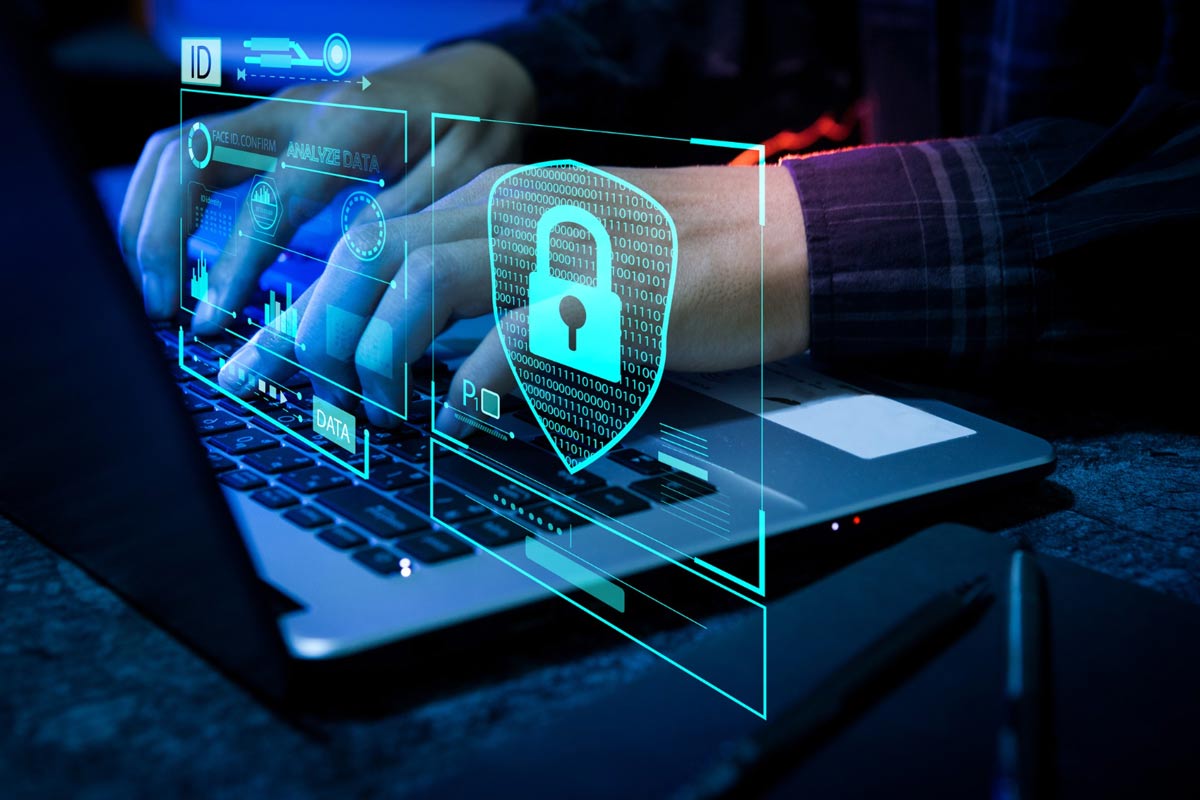
Cybersecurity When Working from Home: 8 Key Tips
Now that everyone’s working from home, it’s time to improve security. While you might not be a security expert yourself, you’re going to have to be your own security department. Let’s take a look at some important working from home security tips.
8 Working from Home Security Tips
1. Keep your physical devices secured.
Your laptop, tablet and phone should all automatically lock whenever they aren’t in use. Otherwise, if you lose your phone, someone could look at everything that’s on it. Ensuring that your physical devices are kept secure is the first step toward ensuring that you have stronger overall security. Don’t let anyone else use your devices if they have confidential work information on them.
2. Always use a VPN.
A VPN secures your internet connection, encrypting it from end to end. Even if you’re working at a coffee shop, you can work safely knowing that your VPN is securing your data. You should always use a VPN when you’re connecting to your work network. While you also do need to secure your Wi-Fi, a VPN will be able to secure your data even if your Wi-Fi is breached. (But that’s just the data transferred; you need to secure your Wi-Fi if you also want to secure your device itself from intrusion.)
3. Use work devices rather than personal devices.

If you can, you should have a work phone and a work computer rather than a personal phone and personal computer. Talk to your company’s internal IT team about the advantages of having work devices that only connect to the work network as these advantages are considerable. When people work from personal devices, there’s bound to be some form of crossover between data.
4. Learn to identify phishing attempts.
Phishing attempts are things like emails that ask you to send in your login information and passwords. But they can also be links that look like they go to your corporate intranet. Always double-check where something has been sent from and make sure that you’re responding to the right person.
5. Don’t download privileged files.
Privileged files should stay on the system on which they reside. Once you have a copy of something, it has to be secured as tightly as the original file. It’s better to just not download anything. You should keep things in a collaborative environment, such as a document server. You should never send secured information through an email. Once something is in an email, it can be sent anywhere.
6. Use proper password hygiene.
You should choose passwords that are long and simple, such as passphrases. Everything you use should have its own password. If you find it difficult to remember your passwords, consider investing in a password keeper. A password keeper will store all your passwords for you, encrypted, so you don’t need to worry about it. Of course, that also means it’s even more important to secure your device.
7. Leverage two-factor authentication.

Two-factor authentication and multi-factor authentication should always be used to secure important accounts. There are also single sign-on utilities that can make it easier to sign onto (and secure) a single network through a single, secured biometric password, but you would need to consult IT about it. On your side, you should turn on two-factor authentication wherever possible.
8. Keep your software updated.
When software isn’t kept updated, it can be vulnerable. All software has vulnerabilities. As they are discovered, they’re patched out. If you don’t patch your system, cyber attackers will know about the vulnerabilities and be able to attack you through them. Regularly update your software. If possible, ask IT if they can set it so that your software on your work devices automatically updates itself; this will take some of the burdens off of you.
Importantly, understand your risks. Know that there are cyber attackers out there, that they’re regularly trying to breach systems and that you, as an employee, are the first defense. If you’re working from home, your home security has to be just as good as your work security — otherwise, your work could be breached, too.
Doing Cybersecurity Work from Home
Managing cybersecurity working from home doesn’t just fall on you. Working from home security also falls upon your systems and network administrator. Your IT department should be able to give you more insights into working from home — as well as more guidance.
Consider taking some classes in basic cybersecurity or asking your work to host seminars about threats like ransomware. The more you learn about cybersecurity, the better you’ll be poised to not only to secure your work life, but also your own documents.
For more information about cybersecurity (and to find out what your work could do to promote better security), take a look at the content provided by Red River.

written by
Corrin Jones
Corrin Jones is the Director of Digital Demand Generation. With over ten years of experience, she specializes in creating content and executing campaigns to drive growth and revenue. Connect with Corrin on LinkedIn.




